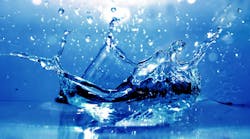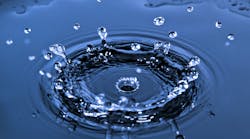The nation’s infrastructure that provides clean streams and rivers and safe drinking water is aging and in need of investment. Meanwhile, budgets at the local, state, and federal levels face increasing demands but fewer resources. Keeping pace with infrastructure needs of the future requires innovative financing coupled with vigorous efforts to increase efficiency and sustainability.
To provide a forum to exchange ideas about how best to meet the challenges confronting water infrastructure, the Environmental Protection Agency is hosting Paying for Sustainable Water Infrastructure: Innovations for the 21st Century, March 21-23 in Atlanta, GA.
With 28 sessions in four tracks, the topics covered will focus on innovations that reduce costs and increase investment in drinking water and wastewater systems and programs. Tracks will run concurrently, each with seven sessions. Moderators and panelists will guide the sessions, with interactive discussions encouraged. Attendees will be able to participate in sessions from any of the tracks. The tracks available are:
Sustainable Water Infrastructure − This track will primarily examine innovations for reducing capital and operating costs associated with water infrastructure. Topics will include specific strategies and practices related to full-cost pricing, watershed approaches, water efficiency, and best management practices.
Federal Roles in Water Infrastructure Innovation − This track will highlight new practices of particular SRF programs that yield the greatest public benefits. Other federal assistance programs will be discussed in terms of their complementary roles.
State and Local Innovations -- States and localities operate as laboratories for innovation. Participants in this track will learn about unique investment approaches to address similar water infrastructure challenges and have opportunities to learn from peers with similar problems and alternative solutions. Topics will include new developments in financial institutions and instruments, as well as innovative technologies, management, procurement, and other related areas.
International Innovations in Finance, Technologies, and Management -- Comparing U.S. financial tools and practices to innovative models from other countries offers a unique opportunity to learn how domestic programs may benefit from importing concepts and strategies from abroad. Topics will include asset management, privatization, bond banks, revolving funds, and new technologies, among others.
More information on the event can be found at www.payingforwater.com.
SRF Report Outlines 2006 Program Assistance
The Clean Water and Drinking Water State Revolving Fund (SRF) programs have posted updated financial and programmatic information to the EPA web site. In 2006, the CWSRF provided more than $5 billion for wastewater infrastructure, nonpoint source pollution control, and watershed and estuary management water quality projects. Cumulatively the program has provided close to $58 billion since 1988.
The DWSRF provided $1.7 billion in 2006 and has cumulatively provided more than $11 billion for drinking water infrastructure projects since 1997. States have also spent more than $800 million for other types of activities that support their drinking water programs.
The CWSRF data is available at http://www.epa.gov/owm/cwfinance/cwsrf/cwnims/index.htm. The DWSRF data is available at http://www.epa.gov/safewater/dwsrf/dwnims.html .
EPA Awards Research Grants
The EPA has awarded 10 universities grants to develop better methods for detecting harmful organisms in drinking water, including viruses, bacteria and protozoa. The grants, awarded through EPA’s Science to Achieve Results (STAR) research grants program, are aimed at ensuring that the United States has the safest drinking water in the world.
“These five million dollars in grant money are an example of how EPA puts science to work to protect human health,” said Dr. George Gray, EPA’s assistant administrator for research and development.
As an example of projects, the Johns Hopkins Bloomberg School of Public Health, Baltimore, Md., received $600,000 to help develop a new method to improve measurement of viruses and protozoa in drinking water, that could replace the current reliance on bacterial indicators only. The University of California, Riverside, received $600,000 to research a real-time method to detect and measure intestinal viruses in drinking water.
More information on these drinking water grants can be found at http://www.epa.gov/ncer/recipients/drinkingwater2005. Information on the STAR research grants program is at: http://es.epa.gov/ncer/grants.


